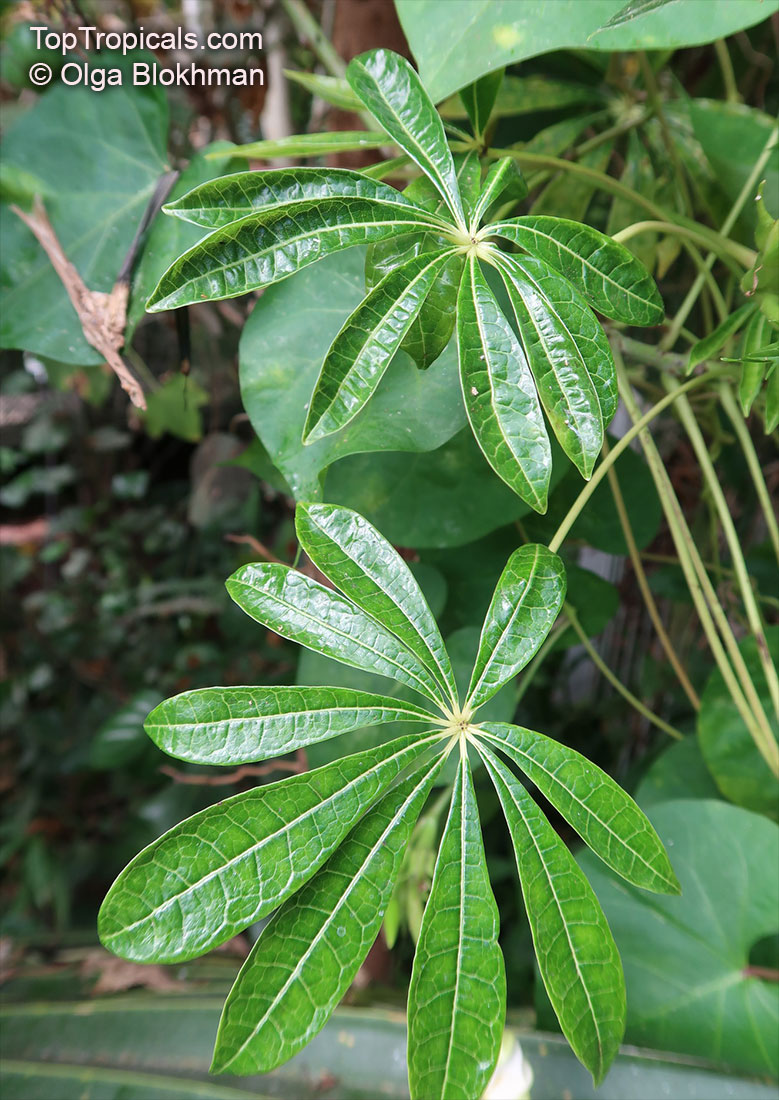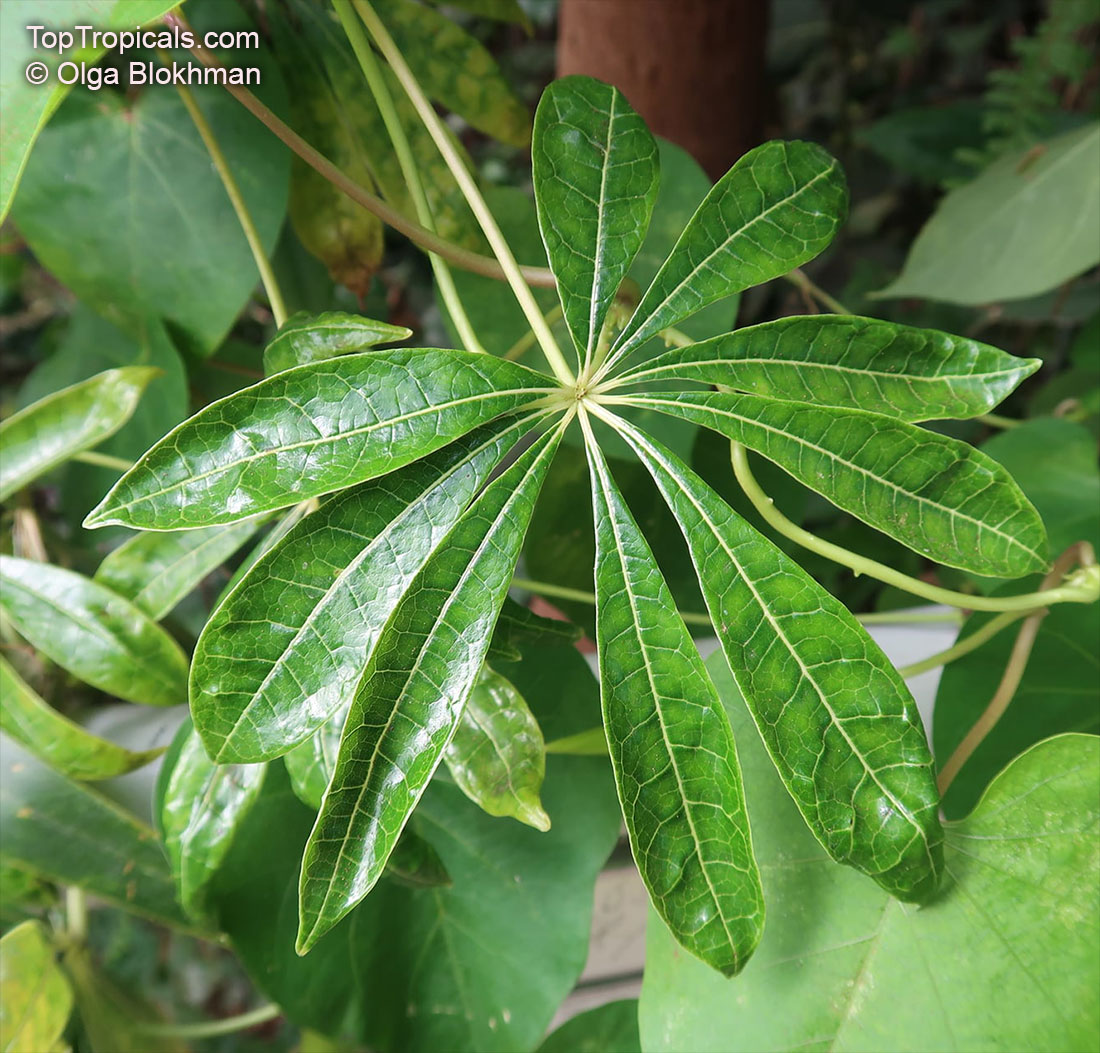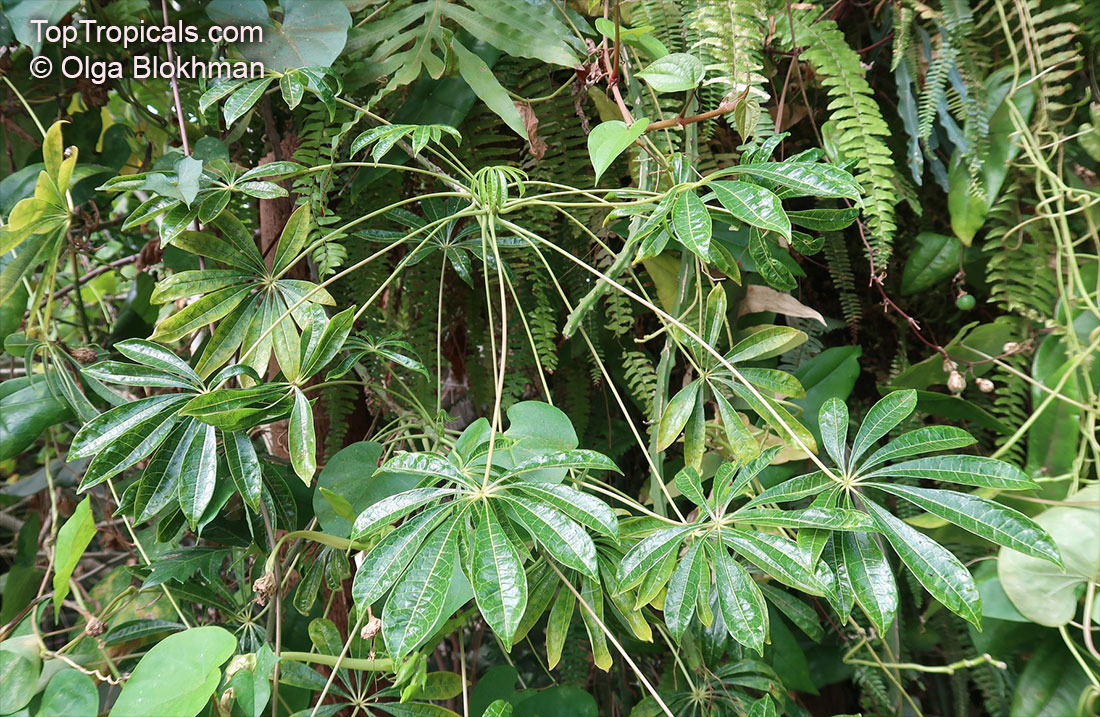Jacaratia spinosa (Wild Mango)
Top Tropicals Plant Encyclopedia
Botanical names: Jacaratia spinosa, Carica spinosa
Common names: Wild Mango, Mamoeiro-bravo
Family: Caricaceae
Origin: South America







Jacaratia spinosa is a small to medium-sized deciduous tree with a very striking, strange, yet attractive appearance that is native to South America. Also known as Wild Mango, the tree can reach up to 10 to 20 feet in height and is recognized for its ethnomedical properties. Depending on its location, the plant can be very thorny or spiny and grows best in full sun or semi-shade in areas with a USDA Zone of 9-11.
The most beneficial feature of a Jacaratia spinosa is its production of edible fruit, which has a particularly unique taste that is likened to chestnuts. The skin of the fruit is hard and needs to be scored and cooked before eating in order to take advantage of its high nutritional content and avoid the copious latex that is released. The edible fruit is rich in vitamins and minerals, making it an important and beneficial source of dietary nutrition. A fully mature Jacaratia spinosa can produce up to 25 fruits per season, making it a great addition to any home orchard or garden.
To ensure the best growth and care of a Jacaratia spinosa, special attention to soil and water requirements should be taken. The tree prefers the soil to be well-draining, loose, and slightly acidic in nature. Depending on its location, the amount of water that it needs will vary. In cold regions, the plant should be grown in a pot and placed close to a south-facing wall in order to supply the necessary amount of sunlight. Through this combination of environmental conditions, a Jacaratia spinosa can be cultivated with relative ease, thus allowing for bountiful fruits and a beautiful ornamental addition to the garden!


